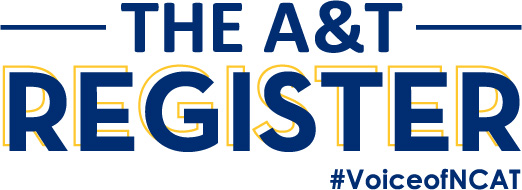As North Carolina A&T State University enters its second academic year since the major budget cut, its inhabitants are still feeling its affects. Last year, the budget cuts were felt mostly by the staff and faculty due to the major job cuts made. The UNC System has been dealing with budget cuts for a couple years now. This year it’s the student’s turn to feel the hit via tuition increases.On June 30, Chancellor Harold L. Martin, Sr. issued a State Budget Update to the university community on A&T’s website. However, in the update Martin shared that the North Carolina State Legislature had decided to keep the management flexibility reduction at $70 million rather than the $175 million that was originally proposed. The update also entailed the General Assembly commitments outlined by UNC President Erskine Bowles. Bowles retired as President of the UNC System in February. Some of these commitments included: fully funding the University’s requests for need based financial aid, enrollment growth and operating reserves for new buildings; adopting the Board of Governor’s alternative tuition plan for the coming year; authorizing additional tuition increases of up to $750 to help offset the impact of budget cuts; and finally to exclude a provision that would have capped University enrollment growth and denied access to qualified North Carolinians. The June 30 update was followed by another update on July 9. This time tuition was the focus. In the letter to university students and parents, Chancellor Martian shared that A&T would be implementing the tuition increase mentioned in the June update. According to Martin, the increase would fall between $400-$750. Martin assured that the tuition increase was necessary to protect the academic core of A&T. This update was posted only a month before tuition payment was due.A&T students didn’t take the sudden news of the tuition increase too well. Senior Dana Hawkins said this off the increase, “The tuition increase is hurting us out-of-state students more because or tuition is already double the amount of in-state students. It’s especially hard for me because I don’t receive any financial aid.”Hawkins was not the only student feeling that way, Junior Jasmine Gurley, “Tuition increasing is an absurdity to hear about as an out-of-state student. I wonder why they are raising the tuition when professors are being laid off and new buildings are being put up. It doesn’t make any sense.”The “tuition increase” graph on the Chancellor’s Faculty/Staff Institute Address shows where the money from the tuition increase is going. Resident and Non-Resident Undergraduate students had a total tuition increase of $627, $110 went to the Board of Governors (BOG) and $517 went to Flex Reduce Offset. For resident and non-resident graduate students, $125 went to BOG and $517 went to Flex Reduce Offset. Their increase totaled $642. The address also states approximately 50 percent of BOG increase and 20 percent of the Flex Offset will go to financial aid to assist students with greatest financial need.As far as the budget is concerned, the strategic priorities are: Improving the intellectual climate of the university, improving the operational effectiveness and efficiency, expanding the university’s resources, improving marketing and communications, improving campus/community safety, and reaffirming SACS accreditation. All budget submissions were reviewed by the Budget Allocation Committee (BAC) and prioritized based on alignment of proposals to priorities, strengths of proposals, and availability of resources. The BAC then finalized a list to be given to the Chancellor and his Cabinet who then made the final decision. Martin announced that 35 initiatives were selected for funding during the 2010-2011 academic year, all of which contribute to the successful accomplishment of the university’s priorities. The list includes website redesign and the re-instatement of a middle grades education degree program. A copy of the full 35 initiatives are listed on the university’s website.
- Sylvia Obell
